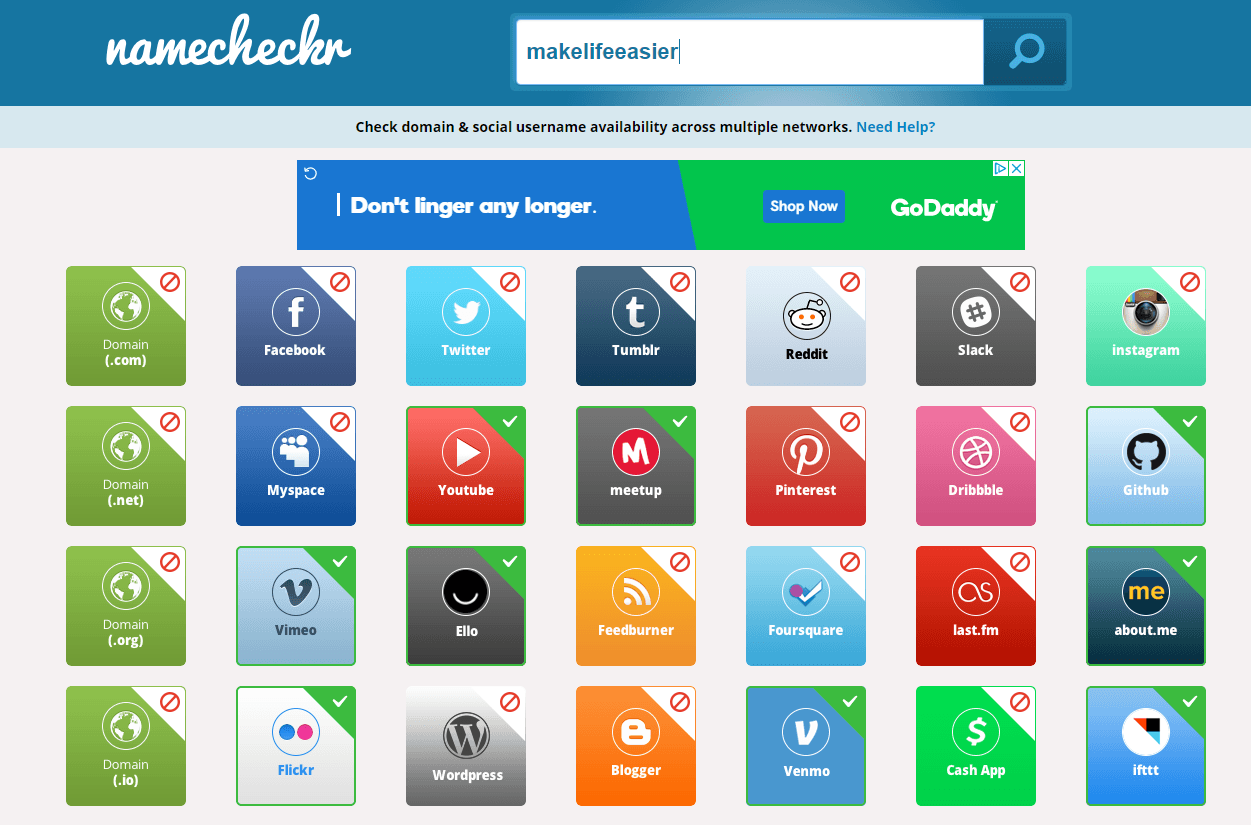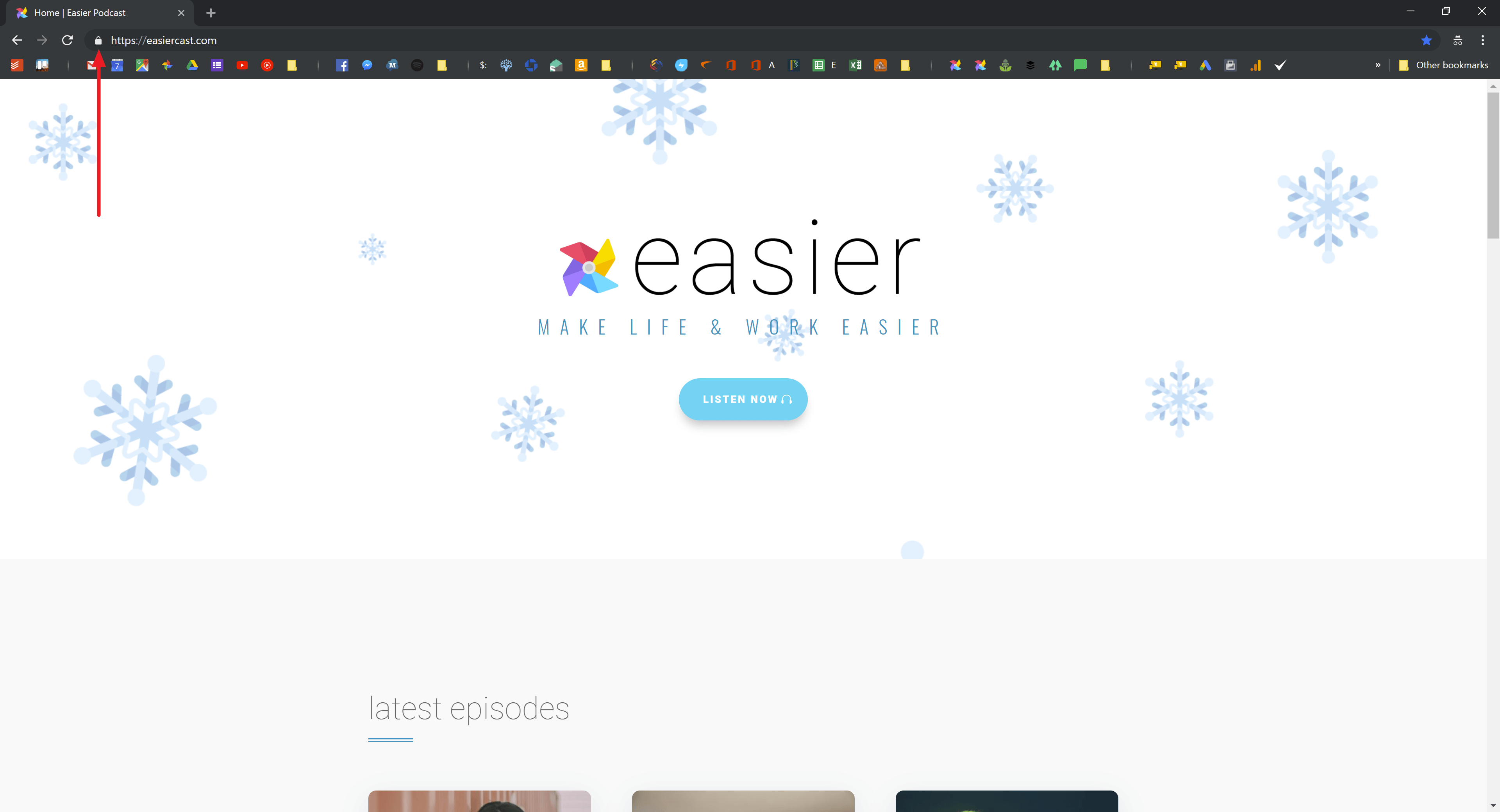In the second episode of New Year, New Business, we’re talking about the basics of getting a website up and running.
I’m going to cover everything you need to know to get a bare-bones website online, including tools, cost, and a few extras
Table of Contents
New Year, New Business
For all of January 2019, we'll be talking about how to set up your own side-hustle! Here's the episode lineup:
4 Things to Do When Starting a Side-hustle w/ LaTasha James
Episode 23
The Complete Beginner’s Guide to Starting a Website
Episode 24
4 Things Every Business Website Must Have w/ Amanda Freeman
Episode 25
How to Use Social Media to Boost Your Business w/ Shelbi Moore (part 1)
Episode 26
How to Use Social Media to Boost Your Business w/ Shelbi Moore (part 2)
Episode 27
Put Your Goals on your Desktop Background
Make Life Easier
As I was planning my six-month goals for 2019, I had an idea!
I know it’s a good idea to put your goals in a place where you’ll see them often. I was thinking about where that could be.
I wondered about printing / framing them, or about continuing to write them out daily (I talked about this back in #6: What to Include in a Morning Routine).
But then a new thought struck me: What if I designed a graphic for my computer’s desktop background? I’m always on my computer, so I’d be reminded of my goals every day.
That’s exactly what I did! Here’s what I came up with:

If you try this, let me know what you come up with! Drop a note in the comments ?
The Complete Beginner’s Guide to Starting a Website
Make Work Easier
Let’s jump right in! Here are the things you’ll need to know to get a website up and running.
1. Decide on a name
The first thing I recommend you do is ensure that you’ve got a name you love.
This name appears everywhere, from your website, to your domain, to your email addresses, to your social media profiles. If you pick a name you don’t love, trying to change it later can be a total pain.
Plus, the name you select will impact two of the steps in this process, too.
Whenever I have to name projects, it takes me quite a while. And that’s okay. I want to be sure I get it right.
A tool you can use
When I’m naming an online project (e.g., this podcast, my technology side-hustle), I use a tool called Namecheckr.
Namecheckr allows you to type in the name you’re thinking of using. It then tells you what domain / social usernames are available.
For example: Let’s say I’m starting a podcast, and I’m thinking of calling it Make Life Easier. Ideally, I’d want makelifeasier.com, as well as makelifeeasier across social platforms.
When I run it through Namecheckr though, it becomes clear that I might need to consider another name (or another spelling):

You can see that none of the common domain extension (.com, .net, .org, .io) are available. Nor is this username available on any of the common social platforms (Facebook, Twitter, Instagram).
YouTube is available, but it would be unwise to select this name, even if my goal was to start a YouTube channel.
Consistent naming is important; it helps your audience find you wherever they look.
Once you have a name you love,
you can move on to the next step!
2. Sign up for a dedicated Google account
Once you start building your business, you’re going to need to create accounts on a bunch of different platforms: Your host, social media platforms, business tools, etc. This can get messy very quickly.
What I’ve learned to do is to set up a Google account for your business before you register for anything else. Then, as you register for accounts, use this email address. This way, all of your information will come to a single place! And, if you ever lose access to one of those accounts, you’ll know just where to find the recovery emails.
As part of your hosting package (more on this below), you’ll likely have the ability to set up email addresses with your domain (more on this below, too). For Easier, I have podcast@wordpress-739001-2510787.cloudwaysapps.com.
But, I don’t use that as my primary account for a few reasons:
- You have to sign up for hosting / domain with an email address before you can create custom email accounts
- If your hosting ever goes down, you’ll lose access to your email
- It’s wise to reserve your name across Google, too!
Security tips
If someone hacks into a part of your business, you’ll want to limit the damage. You can do so by following these steps:
- Your Google account should be named slightly differently from all of the other accounts you create. This makes it harder to guess.
- It should also have a unique password (all of your accounts should have different passwords).
- You should never share your Google email address with anyone. Instead, once your hosting is set up, create a custom email address (e.g., podcast@wordpress-739001-2510787.cloudwaysapps.com) that you can share publicly.
Also, to secure your Google account even further, you could consider enabling 2-Step Verification. If you set things up using these steps, your dedicated Google account will hold the keys to all of your other accounts. So, it’s a good idea to impart a little extra security here!
3. Decide on a CMS (content management system)
A CMS, or content management system, is an application that’s used to, well, manage your content!
In other words, tt’s a tool that will help you build your website. More specifically, it’ll help you build with little or no coding knowledge.
Some popular examples include WordPress, Squarespace, Wix, and Weebly.
Choose WordPress
If that’s enough for you, feel free to skip to step 4.
If you’re curious why, here are some reasons:
- You own your content. On some other platforms, you don’t!
- WordPress is incredibly flexible. If you need it, chances are there’s a theme or plugin to do it.
- WordPress itself is free!
WordPress isn’t hard to learn!
There’s a slightly higher learning curve than with Wix or Weebly. But, it’s nothing crazy!
In the future, I’m planning to release an episode which dives deeper into WordPress. And, I’m considering launching a course that’ll help folks learn (let me know in the comments or at podcast@wordpress-739001-2510787.cloudwaysapps.com if this is something you’d like).
But, in the meantime, this is a great beginner’s resource:
4. Try it out locally?
An option you have is to set up a local website. This is a website that exists only on your computer (and can’t be accessed online).
Why would you want to do that? Local sites are free!
Most local sites are set up for testing purposes because they don’t cost anything, and they’re a sort of digital sandbox in which you can play.
Overall, I do recommend setting your site up online. But, if you want to pursue this option, here are a couple of resources:
- XAMPP: This is the tool you’ll need to set up the local version of your website.
- Step-by-step guide: Here’s a guide that’ll walk you through every step of setting up a local site
5. Purchase a hosting package
In basic terms, a website is just a bunch of files stored together in a folder that can be accessed online.
The thing most folks don’t have is the place to put the files so they can be accessed online. This is where a server and hosting come into play.
Because you probably don’t have your own server to your files(if you did, you likely wouldn’t be reading this!), you need to rent out some space on someone else’s.
This is where a hosting package comes into play.
Which host should I pick?
There are a ton of hosts out there. Common vendors include GoDaddy, HostGator, Bluehost, etc.
I’ve personally used the following three hosts:
- GoDaddy
- A2Hosting
- Bluehost
To make a long story short, of the three that I’ve used, Bluehost is by far my favorite. Bluehost is where I have Easier set up!
Here are the reasons I like Bluehost:
- The price is very reasonable (more on that in a bit)
- The service is reliable — I haven’t experienced any downtime yet!
- My package included both a domain and an SSL cert (more on both of these in a bit, too)
- My site performs well!
If you’re interested in hosting, and would like to support this podcast, check out Bluehost using my affiliate link. Thanks very much ?
6. Purchase your domain
A domain is simply the link people type in to get to your site. The domain for this podcast, for example, is wordpress-739001-2510787.cloudwaysapps.com.
Quite often, when you purchase hosting, the domain will be included in your package. With Bluehost, mine was!
You can always purchase your domain separately, too. You can research available domains on Bluehost by clicking here.
What should my domain be?
Well, if you followed my advice and did step 1 before starting, you should already know!
Overall though, your domain should be short, simple, and memorable. And, ideally, it would be the same thing as your social usernames.
How much did I pay for my service?
For these services…
- Hosting – 1 year
- Domain – 1 year
- SSL certificate (more at the end of this post)
…I only paid $81.00!
I think that’s a pretty great deal!
7. Install WordPress
Once you have your domain and hosting set up, it’s time to install WordPress.
Most hosts, including all three of the hosts I mentioned above (GoDaddy, A2Hosting, and Bluehost), have a 1-click setup option available.
If you need guidance on completing this process though, there are two options:
- Search How to install WordPress on _________ on Google, where the _________ is the name of your host. (e.g., How to install WordPress on Bluehost). Most hosts have a tutorial available.
- Call your host’s tech support number. I’ve found that all three of the hosts I’ve used have had good support. Bluehost and GoDaddy were better than A2Hosting, but all three were good.
Here’s an additional resource for installing WP, just in case!
8. SSL certificates
This part is about site security.
Ever noticed that padlock icon in the URL bar of your browser?

That icon tells you whether or not an SSL (secure sockets layer) certificate is configured on the site. In other words, it tells you whether or not the site is secure.
From the website globalsign.com, SLL certificates are small data files that digitally bind a cryptographic key to an organization’s details. When installed on a web server, they activate the padlock and the https protocol and allow secure connections from a web server to a browser. Typically, SSL is used to secure credit card transactions, data transfer and logins, and more recently is becoming the norm when securing browsing of social media sites.
In layman’s terms, SSL certs are files that confirm that your site is secure. They’re especially important if you plan to process payments.
Some hosts give these to you as part of your package. Some hosts require you to purchase them. Bluehost included mine with my package!
How do I configure one on my site?
Every time I’ve needed one configured, I simply contacted my host’s support team. I told them I needed my SSL cert configured, and they took care of it for me!
Truthfully, this step can be a little bit complex, so I’ve always found it’s easiest to leave it to the host. That’s what they’re there for!
You did it!
If you’ve gone through all of these steps, you should now have a generic website online and ready to set up!
Let me know if you have any questions about the process, or any questions about the tools or my recommendations. Feel free to drop them in the comments, or email me at podcast@wordpress-739001-2510787.cloudwaysapps.com
Get the Free Download!
15 Strategies for Getting More Done in a Day
I have a fantastic freebie I'd love to send to you. It's a one-page guide that covers my favorite 15 strategies for making the most out of every day.
Click below to grab this download now!



